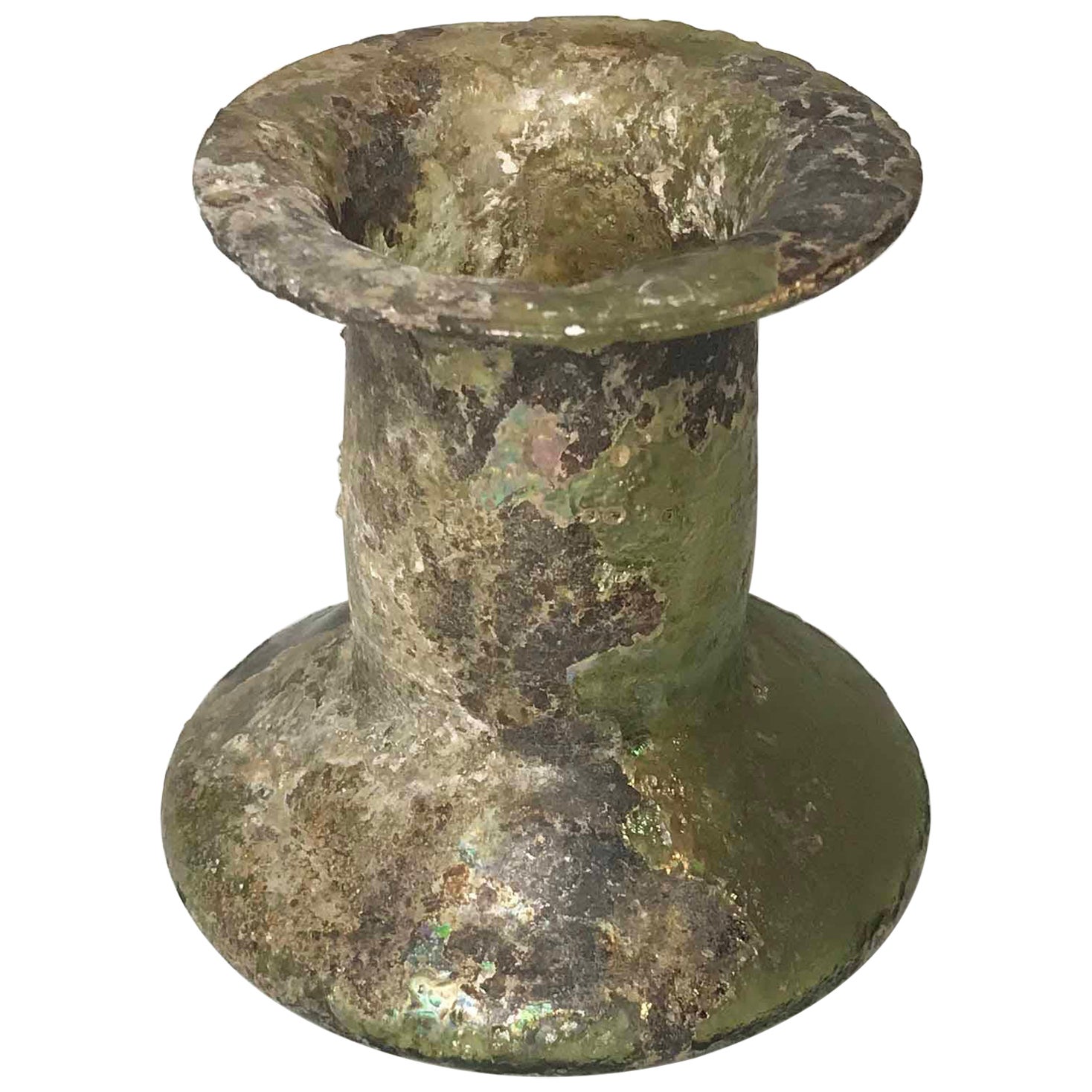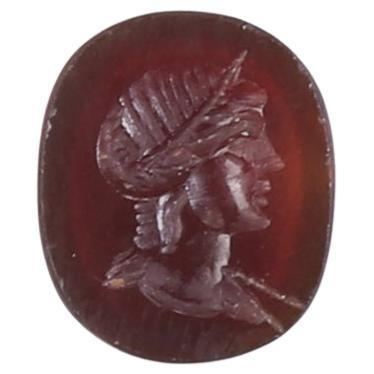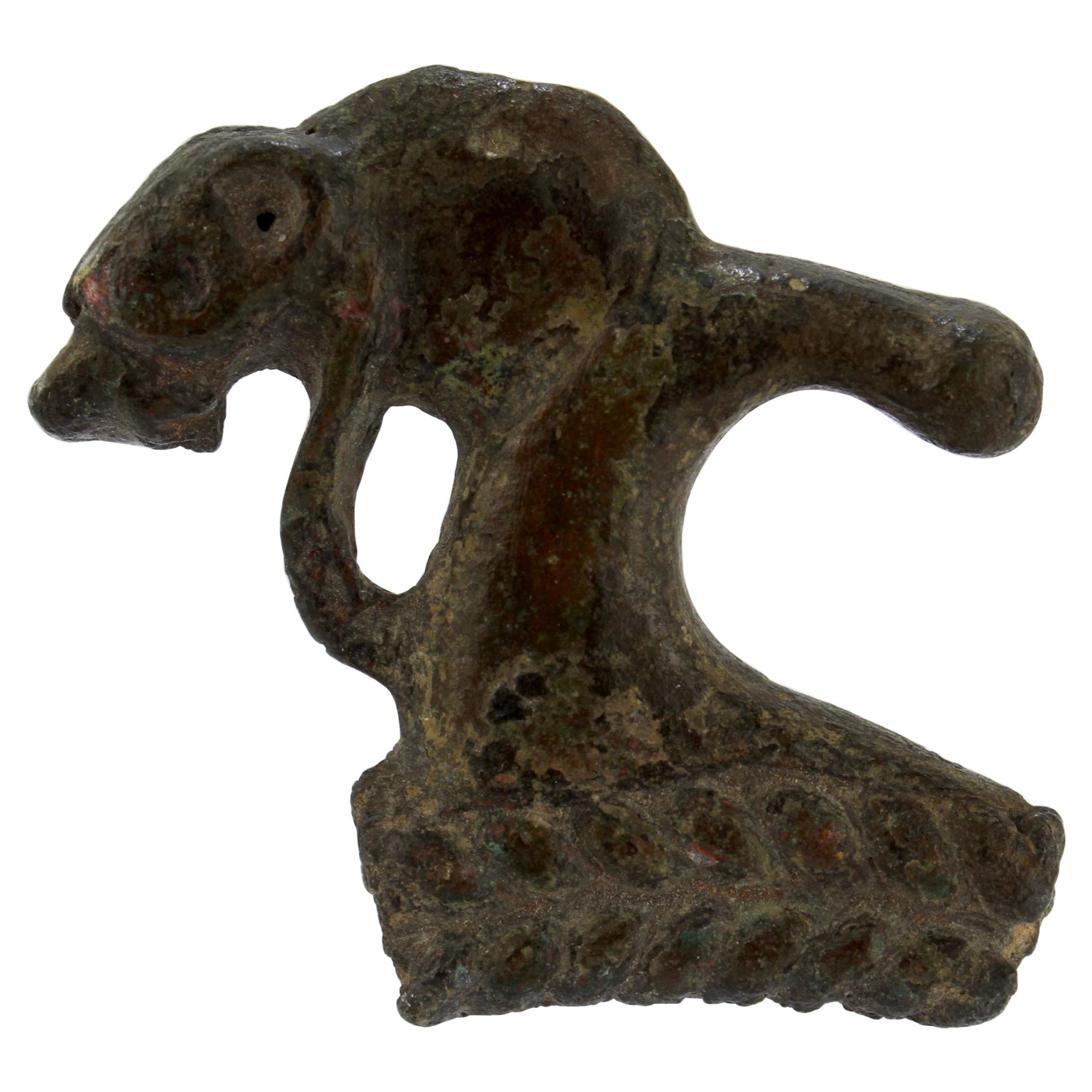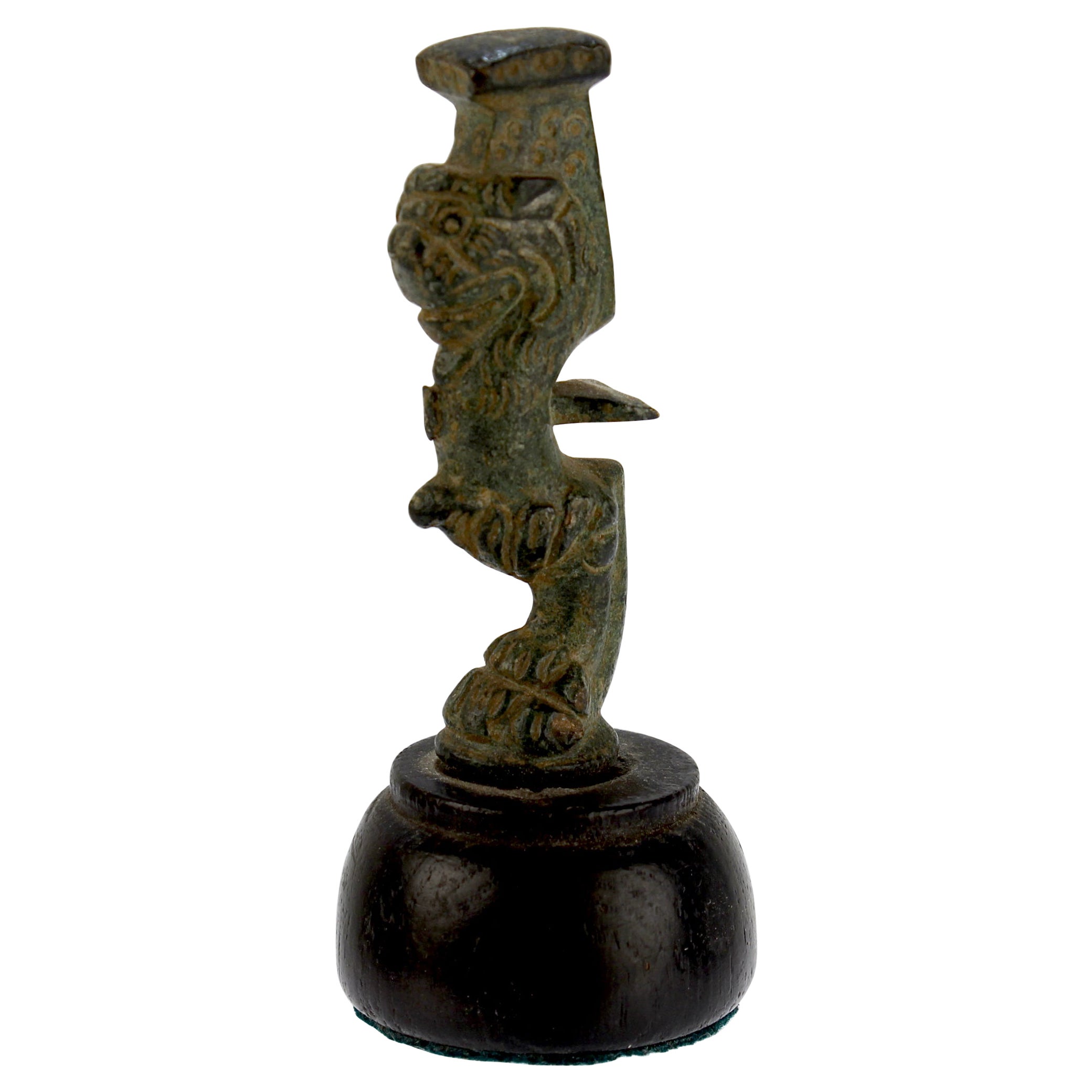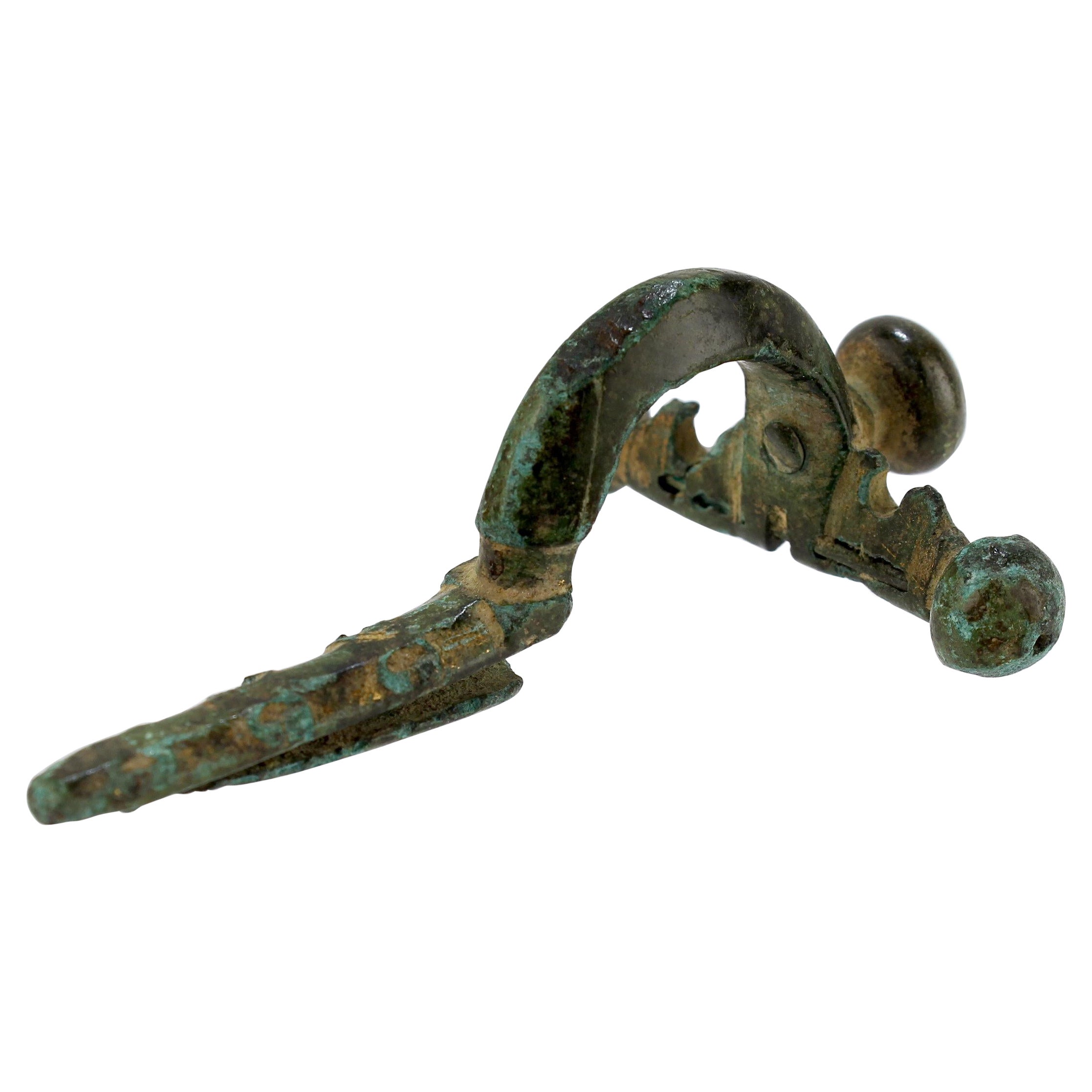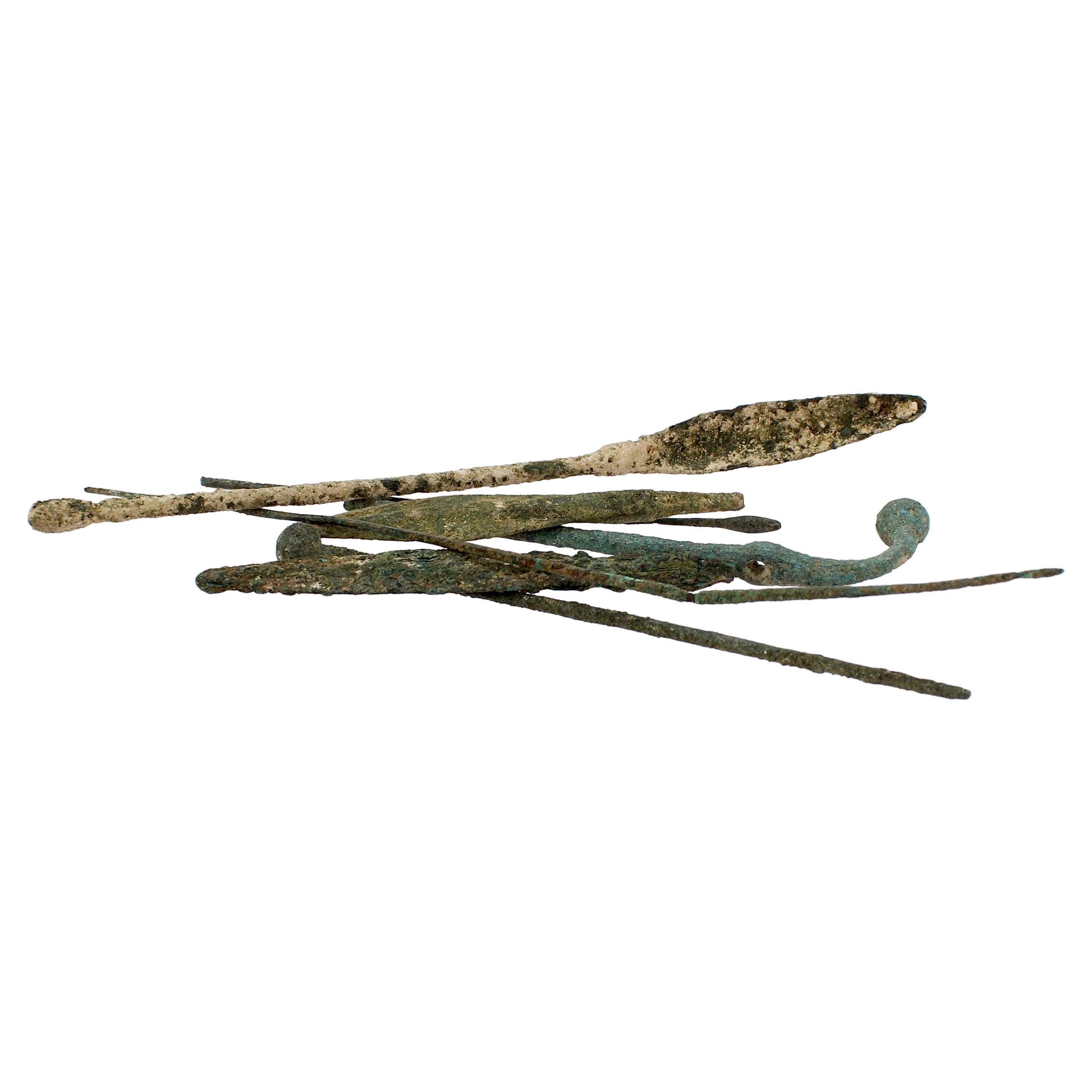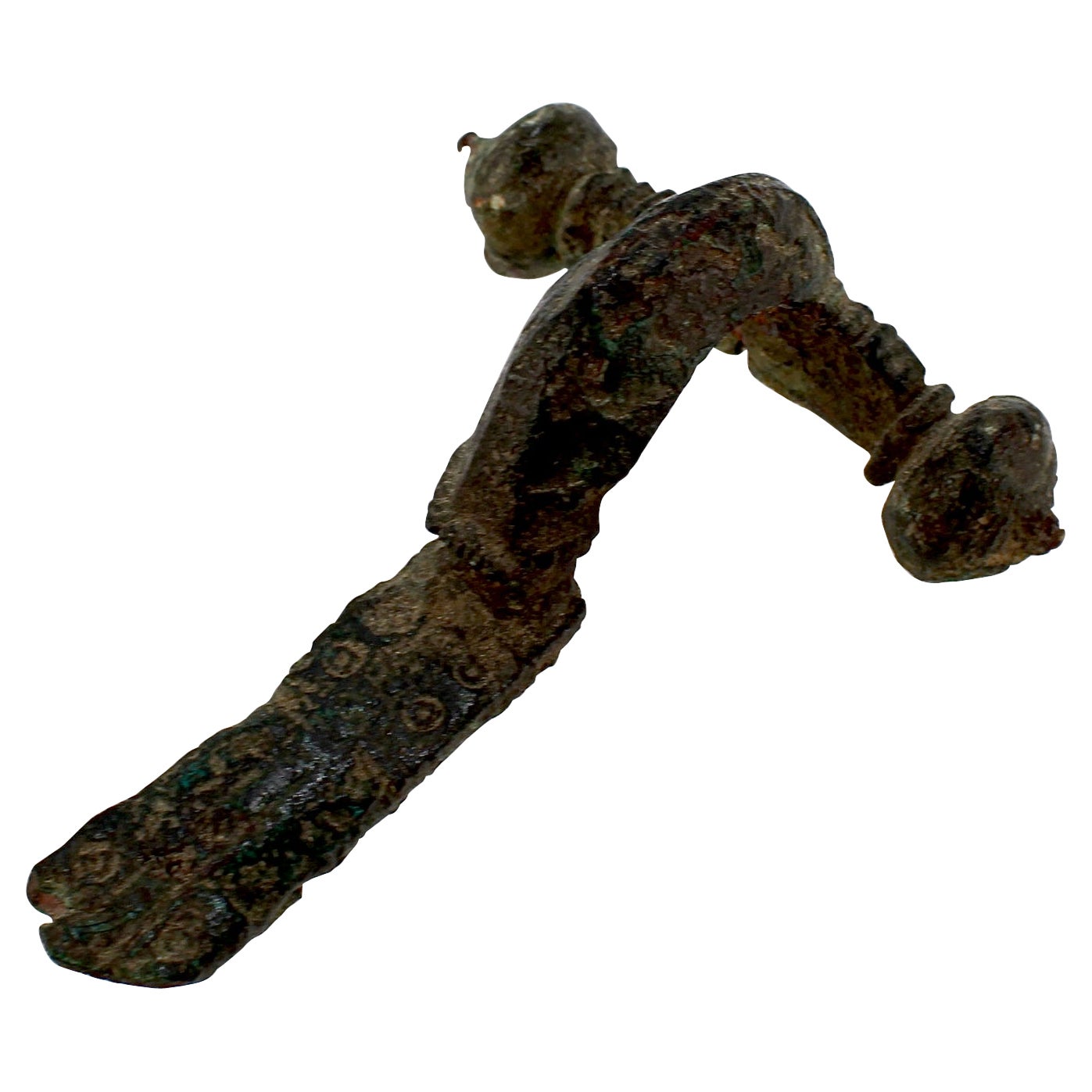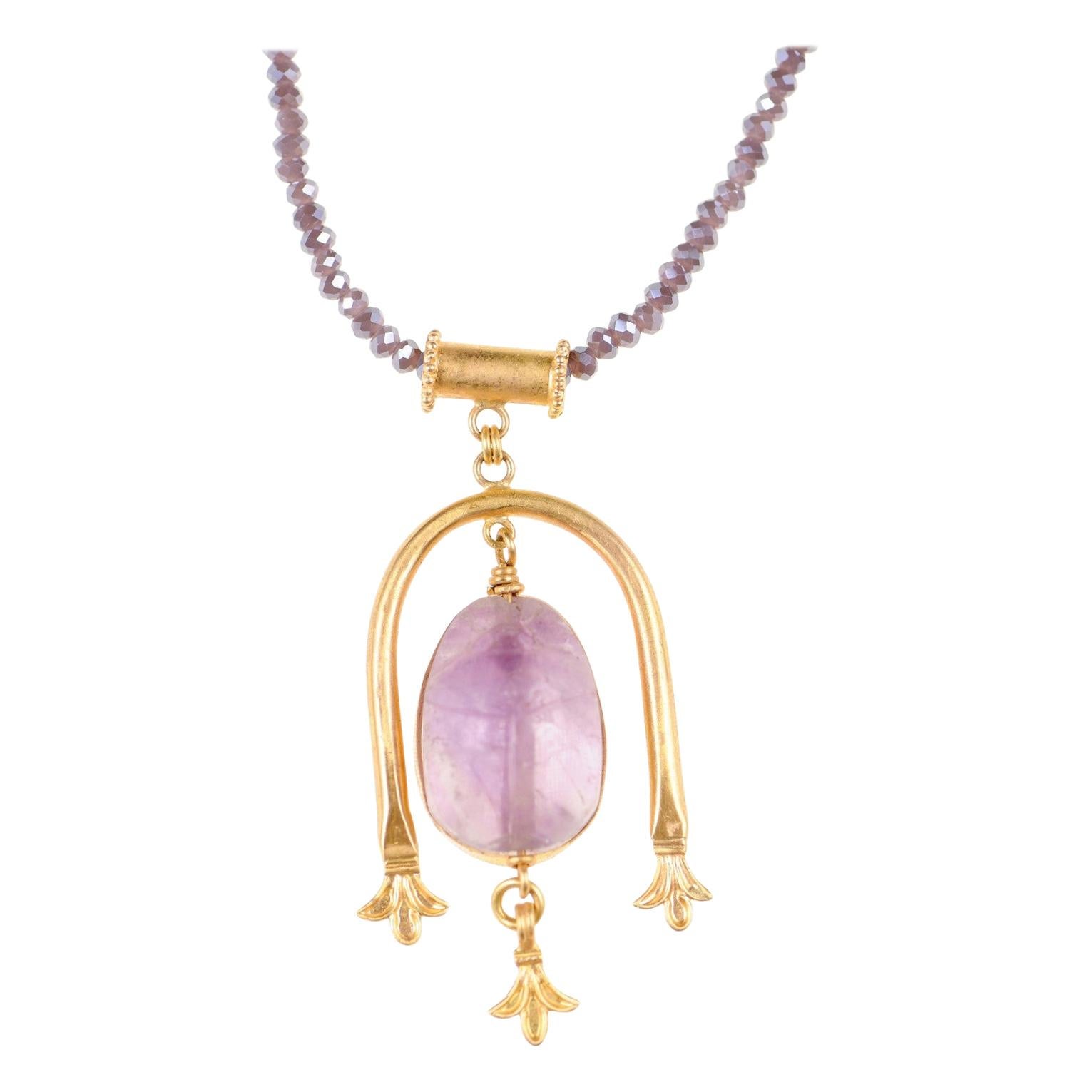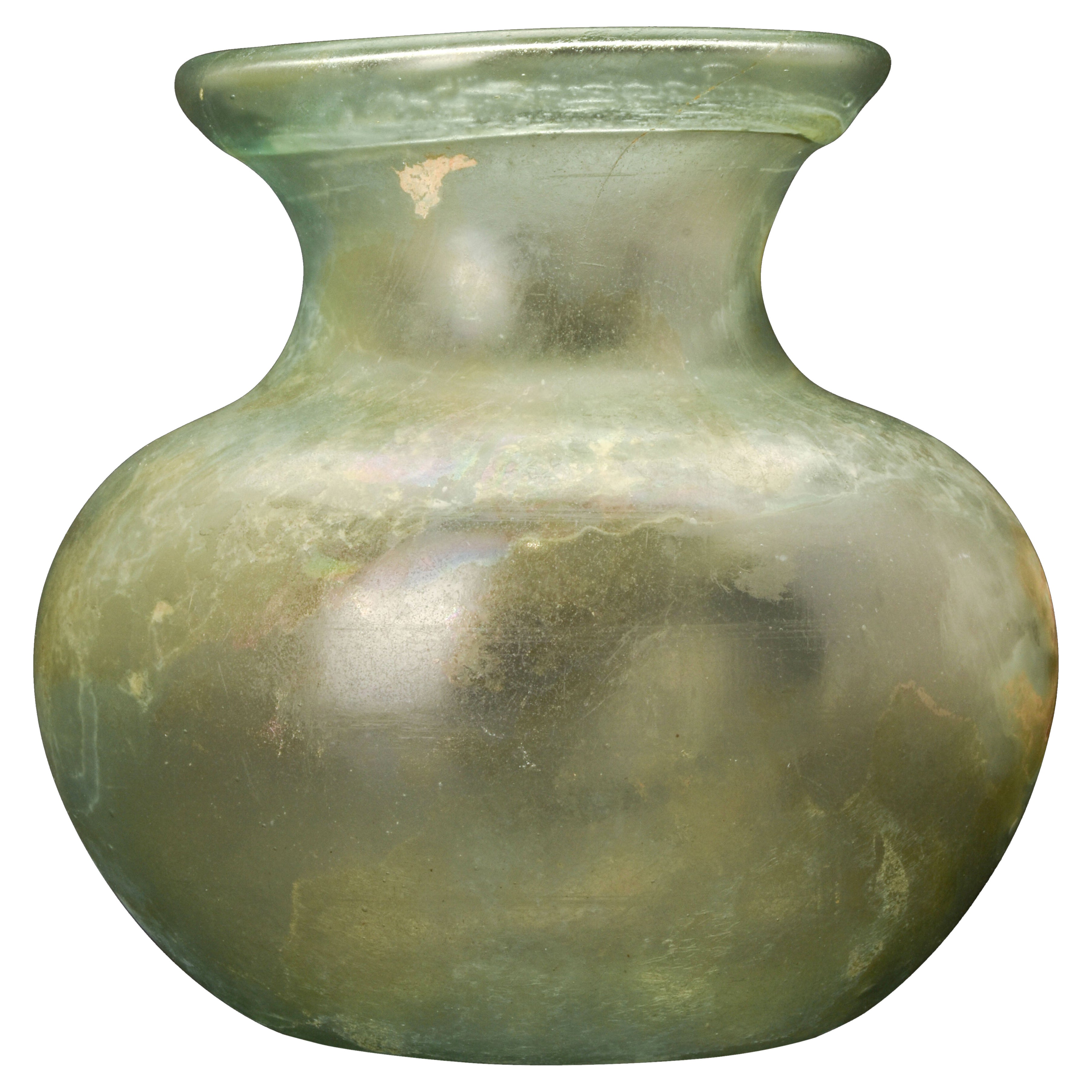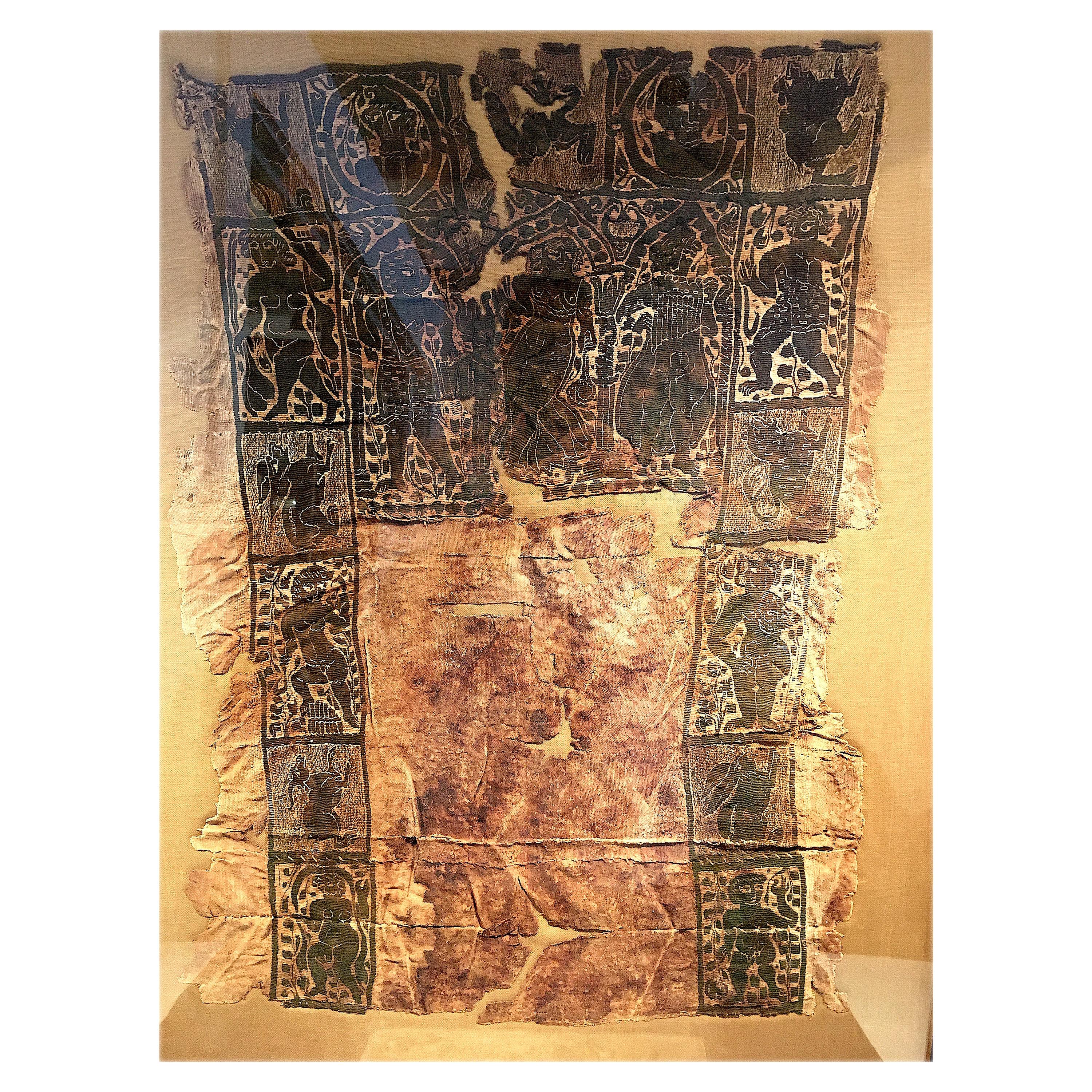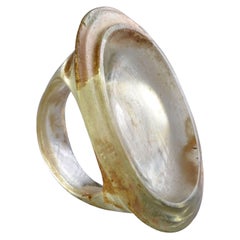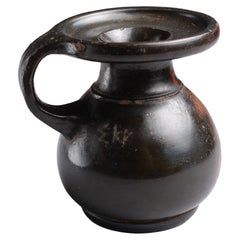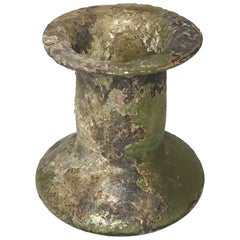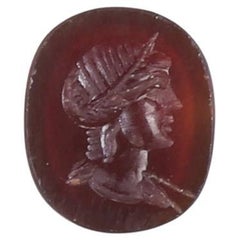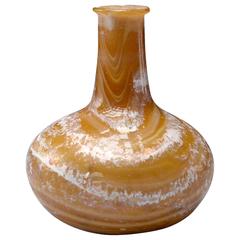
Ancient Roman Marbled Glass Bottle, 50 AD
View Similar Items
Want more images or videos?
Request additional images or videos from the seller
1 of 7
Ancient Roman Marbled Glass Bottle, 50 AD
About the Item
- Dimensions:Height: 2.25 in (5.72 cm)Diameter: 2 in (5.08 cm)
- Period:
- Date of Manufacture:50 AD
- Condition:
- Seller Location:London, GB
- Reference Number:1stDibs: LU105223520772
About the Seller
5.0
Recognized Seller
These prestigious sellers are industry leaders and represent the highest echelon for item quality and design.
Established in 2008
1stDibs seller since 2014
100 sales on 1stDibs
Typical response time: 7 hours
Associations
LAPADA - The Association of Arts & Antiques DealersInternational Confederation of Art and Antique Dealers' AssociationsThe British Antique Dealers' Association
More From This SellerView All
- Ancient Roman Turquoise Glass CupLocated in London, GBTurquoise glass cup Roman Empire, circa 3rd-4th century A.D. With old label reading ‘’965’’. “Pliny relates that the art of glass-making [.] was actua...Category
Antique 15th Century and Earlier Italian Classical Roman Glass
MaterialsGlass
- Ancient Hellenistic Glass Finger RingLocated in London, GBThis beautifully preserved ring was cast from light green transparent glass. Its large size and shape are typical of Hellenistic finger rings, and its now ...Category
Antique 15th Century and Earlier Classical Greek Glass
MaterialsGlass
- Ancient Greek Perfume BottleLocated in London, GBAthenian Black-glaze perfume pot with inscription Athens, c. 425-400 B.C. Terracotta Measures: Height: 9cm; diameter across lip: 7.5cm; width including handle: 9cm This 5th Cen...Category
Antique 15th Century and Earlier Italian Classical Greek Bottles
MaterialsPottery
- Ancient Greek Corinthian HelmetLocated in London, GBCorinthian helmet with Bull Horns and Lotus Flower Decoration. Archaic Period, c.550-500 BC. Cast, hammered and incised bronze. An exceptionally well preserved example of one of the most iconic ancient Greek...Category
Antique 15th Century and Earlier European Classical Greek Mounted Objects
MaterialsBronze
- Roman Marble FootLocated in London, GBRoman marble Fragment of a Right Foot with Sandal Circa 1st - 2nd Century A.D. An evocative Roman marble fragment, preserving the front portion of an over-lifesized sandalled foot. The toes, nails, and bridge of the foot have been sensitively carved. The outer sole of the sandal remains, with delicate, pointed straps joining between the first two toes in a diamond shape. This fragment once belonged to Danish sculptor Jens Adolf Jerichau...Category
Antique 15th Century and Earlier Italian Classical Roman Figurative Scul...
MaterialsMarble
- Ancient South Arabian Alabaster InscriptionLocated in London, GBSouth Arabian Alabaster Inscription Calcite Alabaster circa 1st century A.D. ‘’Consequently, neither white marble of Paros nor any other stone which men admire can be compared with the precious stones of Arabia, since their whiteness is most brilliant, their weight the heaviest, and their smoothness leaves no room for other stones to surpass them.’’ - Diodorus Siculus, Library of History, Book II, 52.9 This inscription, finely worked on an alabaster tablet, is a remarkably well preserved example of Ancient South Arabian script, with its distinct bold, angular forms, written in the Qatabanic dialect - that is, the dialect spoken by the people of the kingdom of Qataban, which ruled much of modern day Yemen from the 7th Century B.C. to the 2nd Century A.D. The text, which reads: ‘[... ...]sa?d and Ma?add?i- / (of the lineage) of Hawfa- / She entrusted Anb- / against any malfeasance (which would remove it) from its place’ - indicates that it likely served to commemorate a temple offering. The quality of the script, incised so neatly into the surface of the alabaster, tells us that this piece was commissioned by somebody of considerable wealth and prestige, employing a scribe of equally considerable expertise. South Arabia was known throughout the ancient world for its incredible wealth - so much so that the Romans termed the region ‘Arabia Felix’ - literally, ‘Happy, or Fortunate, Arabia.’ That wealth was built largely on the trade of spices and incense, in which the Kingdom of Qataban played a major part. According to Pliny the Elder, this was the sole country through which frankincense could be exported, first being collected in the city of Shabwa, on the South Arabian coast, and from there travelling by camel up to Gaza, to be shipped all across the Mediterranean - not only that, but all growers of myrrh across Arabia were required to give a quarter of their yield to the king of the Qatabanians. As such, the kingdom became exceedingly rich and powerful, and Pliny goes on to tell us that ‘The nations of the Larendani and the Catabani, and the Gebanitæ [...] occupy a great number of towns, the largest of which are Nagia, and Thomna (the capital of Qataban) with sixty-five temples, a number which fully bespeaks its size.’ Because of the nature of its exports, frankincense in particular - the ‘sweat of of the gods’ according to the Egyptian Book of the Dead, and perhaps most famous as one of the three gifts brought to the newborn Christ - being closely associated with the divine, South Arabia’s reputation in antiquity was as a mysterious, almost sacred, and - crucially - extraordinarily wealthy region, at the very edge of the known world; in the words of Herodotus: ‘’Enough of marvels, and yet the land of Arabia gives off a scent as sweet as if divine.’’ This inscription invokes the protection of god Anbay, the judge-oracle of the chief god ‘Amm, who he served as an attendant. Much of what we know of the religious life of the ancient South Arabians comes to us from early Islamic texts, describing what is known in Islamic scholarship as ‘Jahiliyyah’ - the age before the advent of Islam in Arabia. What comes across in much of these texts is that these religious practices placed a great deal of emphasis on sacred stones, perhaps linked to the brilliance of the alabaster which is local to the region, and which a great many of the cult-objects produced in this time are made from. Hisham ibn-Al-Kalbi’s Book of Idols records: ‘’The Arabs were passionately fond of worshipping idols [...] Whenever a traveller stopped at a place or station in order to rest or spend the night, he would select for himself four stones, pick out the finest among them and adopt it as his god, and use the remaining three as supports for his cooking-pot.’’ This inscription was once in the collection of the intrepid British-Australian travel...Category
Antique 15th Century and Earlier Yemeni Abstract Sculptures
MaterialsAlabaster
You May Also Like
- Roman iridescent green glass bottle antiquities ancient world antiquesLocated in London, GBRoman iridescent green glass bottle antiquities ancient world. A fine attractive ancient Roman green glass bottle with round flattened angular ...Category
Antique 15th Century and Earlier Italian Antiquities
MaterialsBlown Glass
$402 Sale Price36% OffFree Shipping - Very Beautiful Marbled Black Ancient Glass Small Jar/MediterraneanLocated in Sammu-shi, ChibaThis is a very old glass made in the Mediterranean area. A palm-sized small glass jar. I believe it is from the 10th century or earlier. It was prob...Category
Antique 15th Century and Earlier Italian Other Jars
MaterialsBlown Glass
- Ancient Roman Intaglio from 1st-2nd Century AD Carved Carnelian StoneLocated in Chicago, ILAncient Roman Carnelian Intaglio. An intaglio is defined as a small Gemstone, generally semi-precious, that has been carved with images or inscriptions only on the face. This style of carving is the opposite of the cameo technique. The engraving of gemstones was a major luxury art form in the ancient world and an important one in some later periods. This particular Intaglio is Carnelian and dates from the second century AD and shows the head of a figure in profile. It is in very nice original condition and would be ideal for making into a ring. The word Intaglio comes from the Italian word intagliare, meaning “to engrave” or “cut into.” Intaglio describes the process in which an image is engraved into a stone, creating an image in the negative. When a stone carved in this way is pressed into hot wax...Category
Antique 15th Century and Earlier Italian Classical Roman Antiquities
MaterialsCarnelian, Stone
$950 Sale Price24% Off - Ancient Roman Bronze Handle or ArtifactLocated in Philadelphia, PAAn antique or ancient Roman bronze element. This piece was an element of a vase or possibly handle to something larger. It has the head of...Category
Antique 15th Century and Earlier European Classical Roman Antiquities
MaterialsBronze
- Ancient Roman Bronze Leg or Artifact / ElementLocated in Philadelphia, PAA fine Ancient Roman bronze element. It appears to be a leg or support for a larger structure. The leg has a hoofed foot that supports a li...Category
Antique 15th Century and Earlier European Classical Roman Antiquities
MaterialsBronze
- Group of Ancient Roman Bronze Tools & Hair PinsLocated in Philadelphia, PAA fine group of ancient Roman bronze implements and artifacts. Consisting of pins & several small scale tools. From the private collection of Lawrence Majewski, who was a former co...Category
Antique 15th Century and Earlier Italian Classical Roman Antiquities
MaterialsBronze
